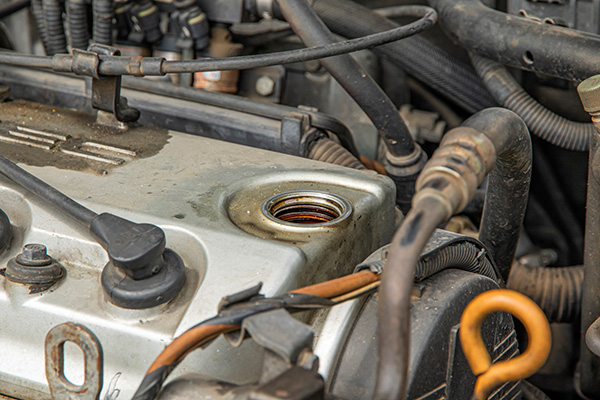
It’s easy to forget the oil cap after topping off your engine, especially if you’re in a hurry. But driving off without it can create more trouble than you’d expect. What starts as a simple oversight can lead to oil splashing out, odd engine behavior, and even damage if it goes unnoticed for too long.
The oil cap doesn’t just cover the fill hole—it helps keep oil where it belongs and prevents debris from getting into your engine. If it’s missing, you’ll want to address it quickly to avoid bigger issues down the line..
You’ll Likely Lose Oil Quickly
Without the cap in place, the pressure inside the engine crankcase has an open path—and oil will often splatter or mist out of the opening as the engine runs. Depending on your engine’s design, this can lead to:
- Visible oil coating nearby engine parts
- Oil burning off the hot engine surface (producing smoke or odor)
- A noticeable drop in oil level
The faster you’re driving and the longer you go, the more oil you’re likely to lose. Low oil levels can reduce lubrication and increase friction between moving parts, which leads directly to wear and potential damage.
The Engine Will Suck In Dirty Air
The oil cap isn’t just there to keep oil in—it also keeps unfiltered air out. With it removed, dust, dirt, and debris from the engine bay can enter the crankcase. That contamination circulates through your oil, increasing wear on engine internals and potentially clogging small oil passages.
If it happens once and you catch it quickly, you’re likely okay. But if you drive for a while with the cap missing, it’s a good idea to replace the oil and filter to remove any contaminants that get inside.
Reduced Performance and Rough Idle Are Common
A missing oil cap introduces a vacuum leak in many engines, especially those with closed Positive Crankcase Ventilation systems. When that system can't regulate pressure correctly, you might notice:
- A rough idle
- Hesitation or stuttering during acceleration
- A decrease in overall power
- A check engine light
In some cases, the computer will register incorrect airflow values and trigger a fault code, requiring a reset after the issue is resolved.
It Could Cause Long-Term Engine Damage
If oil loss goes unnoticed, the engine will eventually run with too little oil. That leads to heat buildup, metal-on-metal contact, and damage to bearings, camshafts, or even the crankshaft.
Most modern engines don’t have much tolerance for low oil levels. Even a short period of running with insufficient oil can cause accelerated wear—or in worst cases, complete engine failure.
Signs You Drove Without the Oil Cap
If you’re not sure how long the cap has been off, look for these signs:
- Oil residue or wetness around the oil fill port
- Burnt oil smell coming from under the hood
- Smoke from the engine bay
- Oil warning light or check engine light on the dash
- Unusual engine behavior (vibration, loss of power)
If you see any of these symptoms, check your oil level immediately and inspect the oil cap area. If the cap is missing or damaged, replace it as soon as possible and have the engine checked for any side effects.
If you’ve driven without the oil cap and aren’t sure whether there’s damage, visit Marc Yount's Tire Pros in Evans, GA. We’ll check your oil levels, inspect the engine for residue or signs of contamination, and perform any needed service to keep your engine running strong.